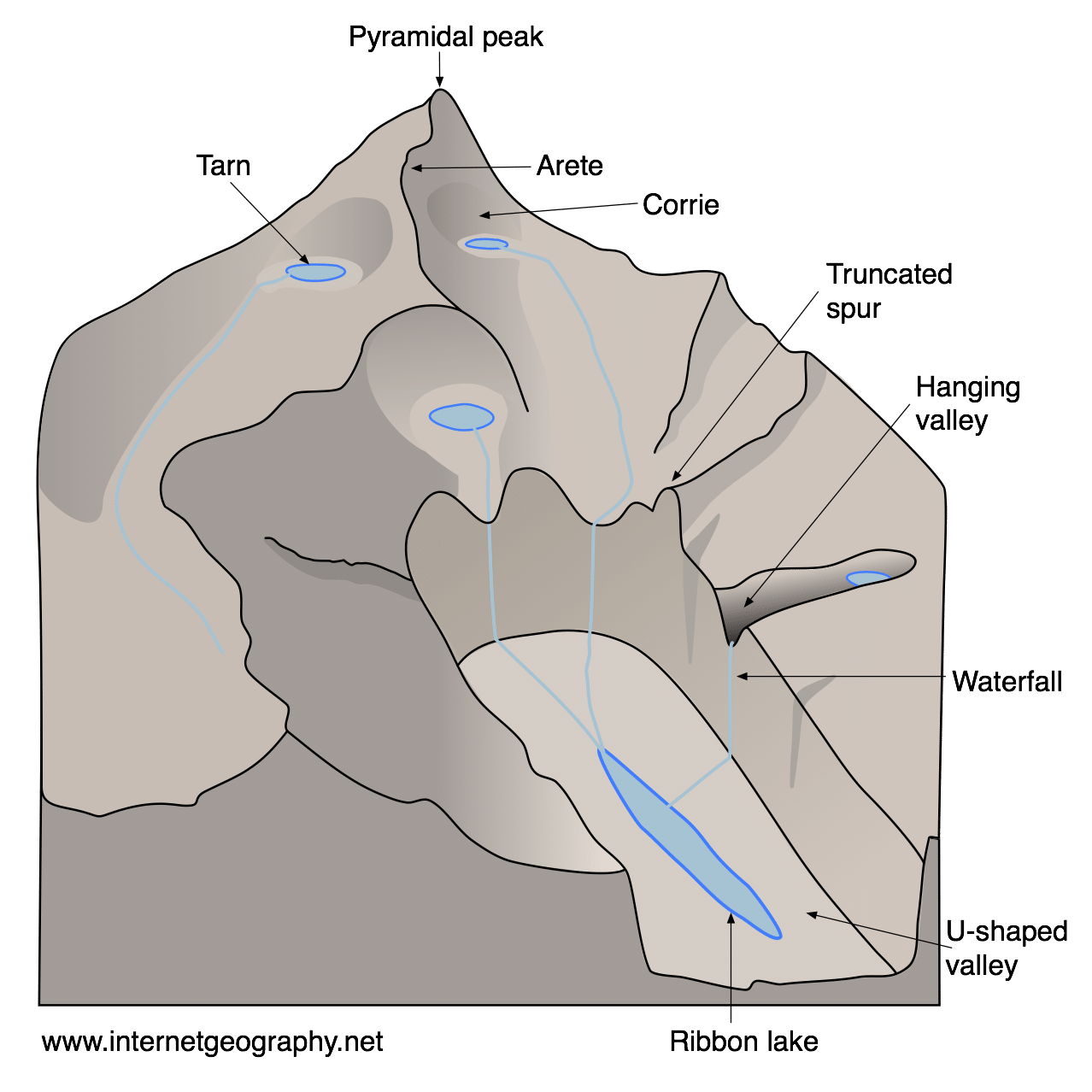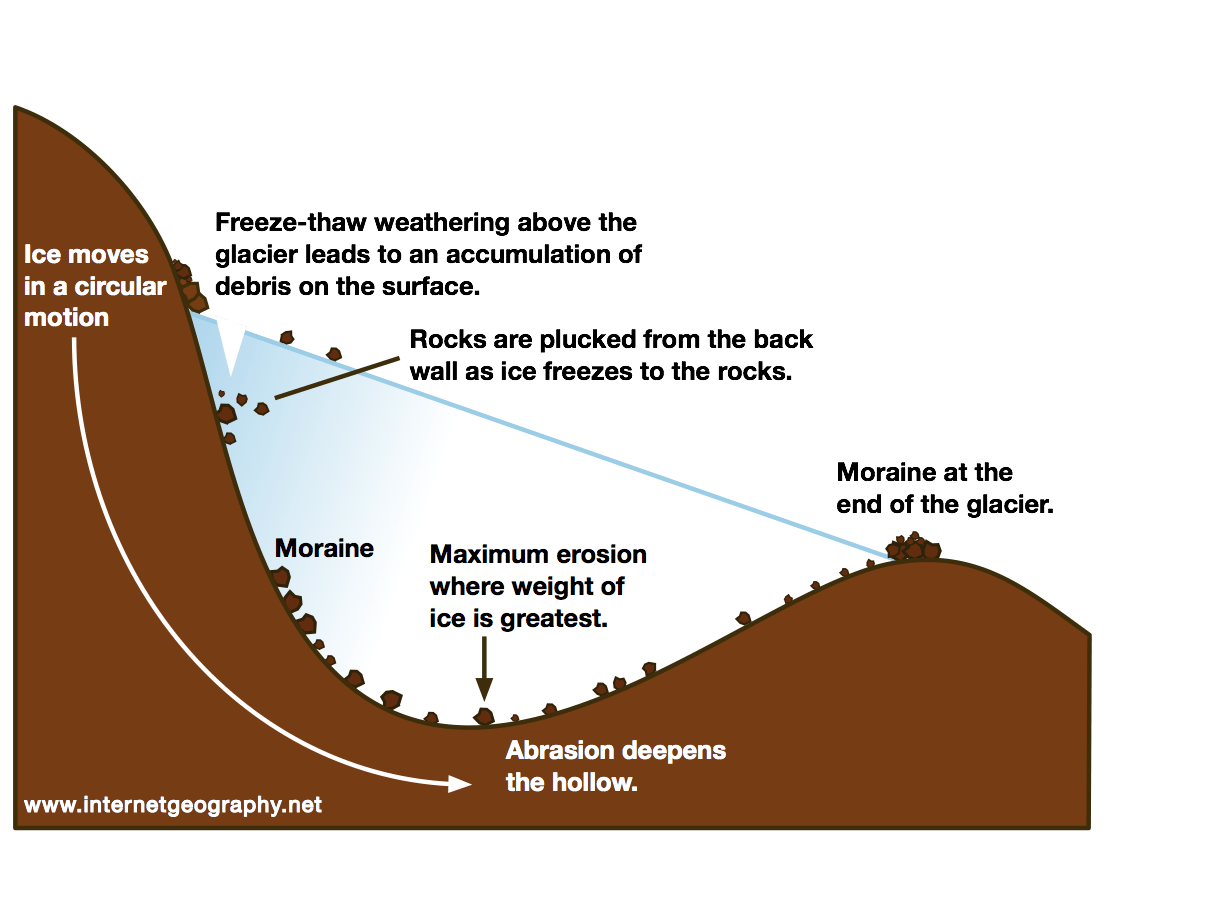Scouring abrades bedrock and removes sediment while melting causes the ice to deposit sediment. At which point is erosion greatest.
Which diagram represents a plateau landscape.

. Those within the ice are called medial moraines and those at the ends or toes are end terminal or recessional moraines. This glacial landscape feature is best identified as 1a kettle lake 3a finger lake 2an outwash plain 4a moraine-----16. This glacial landscape feature is best identified as AA BB CC DD 31The map below shows the area surrounding a meandering stream.
1 coastal plain 3 valley 2 glacial moraine 4 cliff 6. This landscape region is best classified as an eroded 1 plain 3 domed mountain 2 plateau 4 folded lowland 5. Place an X on the map to represent a location in the Tug Hill Plateau landscape region.
Glaciers are masses of ice made made up of snow that. This glacial landscape feature is best identified as. Analyze glacier mass balance data.
To be considered a glacier a mass of ice must be at least 1 mile thick. Glacial features like moraines drumlins and kettles occasionally break the pattern of gently rolling hills found in most of the Midwest. A roche moutonée is a glacial landscape feature produced as an advancing glacier slides over a hill of surface bedrock.
Which landscape feature is most likely to be formed from a bedrock layer that is resistant to erosion. Introduction A glacier is a long-lasting body of ice decades or more that is large enough to move under its weight. 31 The diagram below shows a glacial landscape feature forming over time from a melting block of ice.
This glacial landscape feature is best identified as A kettle lake. This glacial landscape feature is best identified as 1 a kettle lake 3 a finger lake 2 an outwash plain 4 a moraine Block of ice dropped by a glacier Water Ice block melts Ice Ice block becomes surrounded by sediment Ice 1 3 2 4 A B C D. As the glacier advances up the side of the hill the surface bedrock is abraded and smoothed by rock fragments carried within the base of the glacial ice creating a more gentle hillslope.
1 2 3 4 7. Up to 24 cash back Name Glacial Wind and Ocean Waves deposition Version 1. The accompanying diagram shows a glacial landscape feature forming over time from a melting block of ice.
Up to 24 cash back 25The diagram below shows a glacial landscape feature forming over time from a melting block of ice. Glacial features are identified from a combination of morphology and ground verification that generally includes examination of available outcrop. See the figure below for examples.
30The diagram below shows a glacial landscape feature forming over time from a melting block of ice. The interaction of the glaciers with the landscape is a complex process. As the glacier advances up the side of the hill the surface bedrock is abraded and smoothed by rock fragments carried within the base of the glacial ice creating a more gentle hillslope.
Those on the ice flanks are called lateral moraines. The diagram below shows a glacial landscape feature forming over time from a melting block of ice. Up to 24 cash back This glacial landscape feature is best identified as 13Base your answer to the following question on the map below which shows the generalized surface bedrock for a portion of New York State that appears in the Earth Science Reference Tables.
1a finger lake 2a moraine 3an outwash plain 4a kettle lake 1The diagram below shows a glacial landscape feature forming over time from a melting block of ice. This glacial landscape feature is best identified as Amass movement Bwind Cglacial ice Drunning water 26The diagram below shows a sedimentary rock sample. Glacial Geomorphology Learning Objectives Describe the processes that cause glaciers to advance or retreat.
Which agent of erosion was most likely responsible for shaping the particles forming. Up to 24 cash back A roche moutonée is a glacial landscape feature produced as an advancing glacier slides over a hill of surface bedrock. The diagram shows a glacial landscape feature forming over time from a melting block of ice.
Part B - Identify the features of the glacial landscape Glaciers create numerous depositional landforms such as moraines. Which glacial feature has formed by the end of stage 3. This glacial landscape feature is best identified as 1shells of varying size shape and composition in isolated mounds 2a.
Identify erosional and depositional glacial landscape features. A glacier is a mass of ice that thaws and re-freezes repeatedly. A glacier is any piece of ice that moves.
This glacial landscape feature is best identified as. Features such as circular depressions on an outwash plain are related to the mode of formation in this case the melting of buried ice and can be mapped straightforwardly. Aa kettle lake Ban outwash plain Ca finger lake Da moraine 27The diagram below shows a glacial landscape feature forming over time from a melting block of ice.
Sequence in the development of a glacial feature.
Glacial Landforms And Features The Shape Of The Land Forces And Changes Spotlight On Famous Forms For More Information

Glacial Landforms Upland Features Internet Geography

Earth Science Erosion Test 4 8 19 Flashcards Practice Test Quizlet
The Physical Characteristics Of Extreme Environments The British Geographer

Glacial Landscape An Overview Sciencedirect Topics

0 comments
Post a Comment